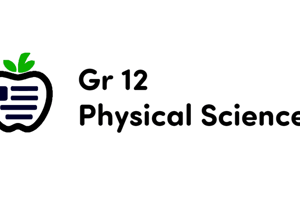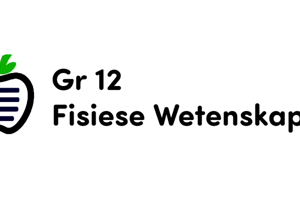Podcast
Questions and Answers
Which of the following represents a positive charge ion in ionic compounds?
Which of the following represents a positive charge ion in ionic compounds?
- NO3-
- Fe3+ (correct)
- O2-
- CO32-
The empirical formula of a compound represents the exact number of atoms of each element in a molecule.
The empirical formula of a compound represents the exact number of atoms of each element in a molecule.
False (B)
What is produced when zinc reacts with hydrochloric acid?
What is produced when zinc reacts with hydrochloric acid?
zinc(II) chloride and hydrogen
The _____ ion has the formula NH4+.
The _____ ion has the formula NH4+.
Match the following metals with their ions:
Match the following metals with their ions:
What is the relative atomic mass (Ar) based on?
What is the relative atomic mass (Ar) based on?
A sulfate ion has the chemical formula SO4²-.
A sulfate ion has the chemical formula SO4²-.
Relative molecular mass (Mr) is the sum of relative atomic masses of _____ compounds.
Relative molecular mass (Mr) is the sum of relative atomic masses of _____ compounds.
What is Avogadro's constant?
What is Avogadro's constant?
1 mole of any gas occupies 22 dm3 at room temperature.
1 mole of any gas occupies 22 dm3 at room temperature.
What is the empirical formula of sulfur oxide formed from 32g of sulfur and 32g of oxygen?
What is the empirical formula of sulfur oxide formed from 32g of sulfur and 32g of oxygen?
The formula to calculate moles is n = mass / __________.
The formula to calculate moles is n = mass / __________.
If 2.4g of magnesium reacts with excess dilute hydrochloric acid, what is the volume of hydrogen gas produced?
If 2.4g of magnesium reacts with excess dilute hydrochloric acid, what is the volume of hydrogen gas produced?
The percentage yield is the ratio of actual yield to theoretical yield expressed as a percentage.
The percentage yield is the ratio of actual yield to theoretical yield expressed as a percentage.
For magnesium reacting with hydrochloric acid, the ratio of Mg to H2 is __________.
For magnesium reacting with hydrochloric acid, the ratio of Mg to H2 is __________.
Match the following calculations to their respective outcomes:
Match the following calculations to their respective outcomes:
Flashcards
Metal Ions
Metal Ions
Positively charged ions formed when metal atoms lose electrons.
Nonmetal Ions
Nonmetal Ions
Negatively charged ions formed when nonmetal atoms gain electrons.
Empirical Formula
Empirical Formula
The simplest whole number ratio of different atoms/ions in a compound.
Molecular Formula
Molecular Formula
Signup and view all the flashcards
Relative Atomic Mass (Ar)
Relative Atomic Mass (Ar)
Signup and view all the flashcards
Relative Molecular Mass (Mr)
Relative Molecular Mass (Mr)
Signup and view all the flashcards
Relative Formula Mass (Mr)
Relative Formula Mass (Mr)
Signup and view all the flashcards
Reacting Mass Calculations
Reacting Mass Calculations
Signup and view all the flashcards
What is a mole?
What is a mole?
Signup and view all the flashcards
What is Avogadro's Constant?
What is Avogadro's Constant?
Signup and view all the flashcards
What is molar mass?
What is molar mass?
Signup and view all the flashcards
What is the molar volume of a gas at STP?
What is the molar volume of a gas at STP?
Signup and view all the flashcards
What is an empirical formula?
What is an empirical formula?
Signup and view all the flashcards
What is percentage yield?
What is percentage yield?
Signup and view all the flashcards
What is theoretical yield?
What is theoretical yield?
Signup and view all the flashcards
What is actual yield?
What is actual yield?
Signup and view all the flashcards
Study Notes
Stoichiometry
- Stoichiometry is the calculation of reactants and products in a chemical reaction.
- Formulae of elements and compounds must be known.
- Molecular formula: the number and type of atoms in a molecule.
- Empirical formula: simplest whole number ratio of elements in a compound.
- Simple compound formula can be derived from models or diagrams.
- Word and symbol equations show reactant-product transformations, including state symbols.
- Ionic compound formulae are derived from the relative number of ions, and their charges.
- Polyatomic ions are groups of atoms that behave as a single unit, for example: carbonate (CO₃²⁻), nitrate (NO₃⁻), ammonium (NH₄⁺), hydroxide (OH⁻), and sulfate (SO₄²⁻).
- Examples of metals: Group 1 (K⁺, Na⁺), Group 2 (Ca²⁺, Mg²⁺), Group 3 (Al³⁺), Transition metals (Zn²⁺, Cu⁺, Cu²⁺, Ag⁺, Fe²⁺, Fe³⁺, Cr³⁺).
Relative Masses of Atoms and Molecules
- Relative atomic mass (Ar) is the average mass of isotopes compared to ¹/₁₂ of ¹²C.
- Relative molecular mass (Mr) of covalent compounds is the sum of relative atomic masses.
- Relative formula mass (Mr) of ionic compounds is the sum of relative atomic masses.
- Calculating reacting masses involves simple proportions, without moles.
The Mole and Avogadro Constant
- The mole (mol) is the unit of amount of substance.
- One mole contains 6.02 x 1023 particles (Avogadro constant).
- Amount of substance (mol) = mass (g) / molar mass (g/mol)
- Calculations can find molar mass, amount of substance, masses, and the number of particles.
- Molar gas volume of a gas under room temperature and pressure is 24 dm³.
Gas Calculations
- 1 mole of any gas occupies 24 dm³ at room temperature and pressure (r.t.p. = 25°C, 1 atm).
- Gas volume calculations involve stoichiometry.
Percentage Yield
- Percentage yield is the ratio of the actual mass obtained to the theoretical mass, multiplied by 100%.
- Actual yield is the mass of a product obtained in a chemical reaction.
- Theoretical yield is the maximum mass of product that could be produced.
Studying That Suits You
Use AI to generate personalized quizzes and flashcards to suit your learning preferences.




